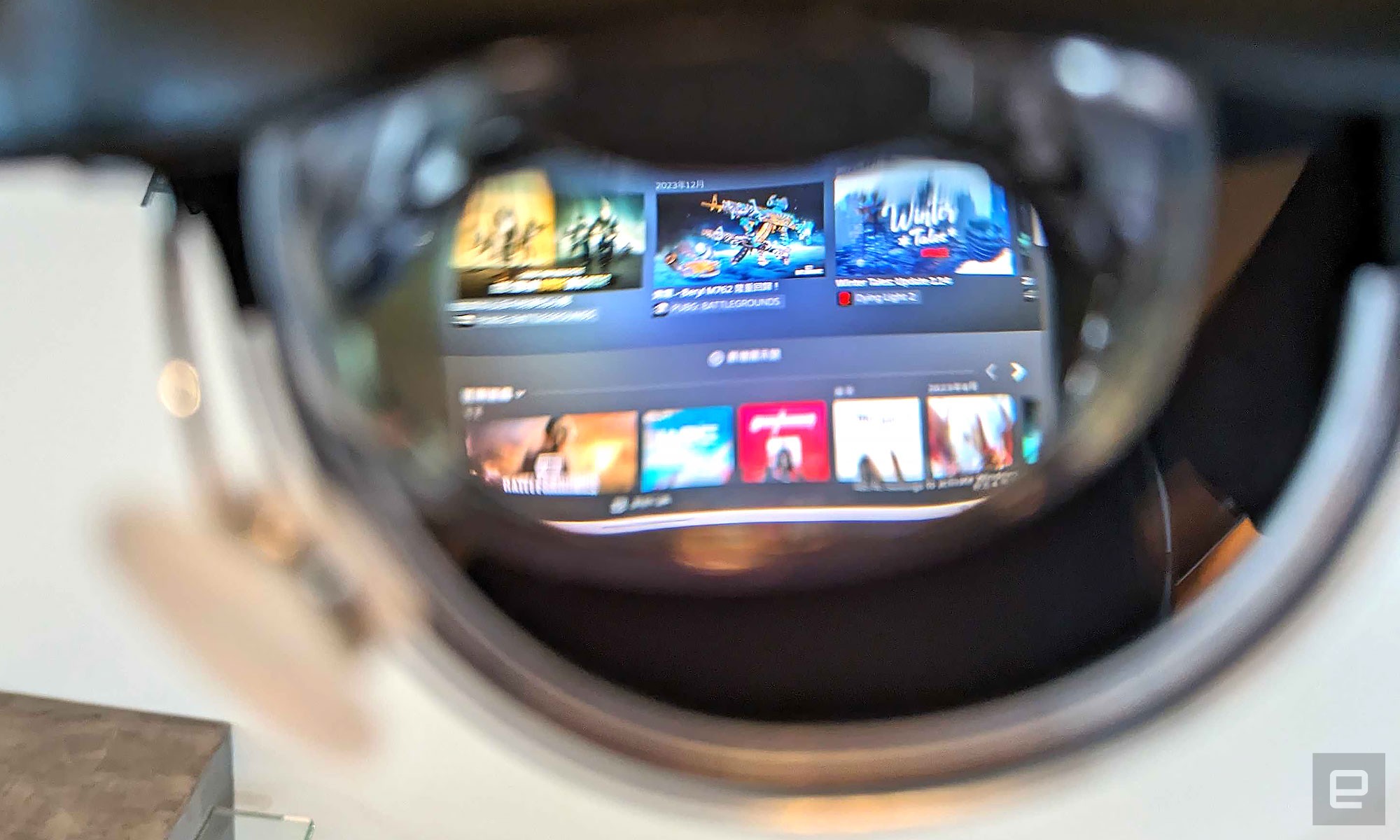
At CES 2024, ASUS appears to have taken individuals unexpectedly with the announcement of its AirVision M1 glasses, with some viewing it as an alternative choice to Apple’s Imaginative and prescient Professional headset. However I found that ASUS’ glasses are way more of a novel various to moveable displays than one thing meant for spatial computing.
The massive distinction between the AirVision M1 glasses and one thing just like the Imaginative and prescient Professional and even Xreal’s Air 2 Ultras is that it doesn’t actually help something in the way in which of interactive AR. Positive, the glasses are capable of undertaking your desktop or a number of home windows into house, but it surely must be tethered to a close-by machine and doesn’t acknowledge hand gestures or different digital objects.
As an alternative, I discovered that its main goal is to offer you additional display house, however with out the necessity to carry round large and hulking moveable displays. That includes built-in microLED shows with a full HD decision, the AirVisions can show as much as six or seven digital home windows or desktops. It’s also possible to select betwe
en a handful of side ratios (16:9, 21:9, 32:9 and extra), with the glasses three levels of freedom permitting you to both pin these screens in digital house or observe your head as you progress round.
As an alternative, I discovered that its main goal is to offer you additional display house, however with out the necessity to carry round large and hulking moveable displays. That includes built-in microLED shows with a full HD decision, the AirVisions can show as much as six or seven digital home windows or desktops. It’s also possible to select between a handful of side ratios (16:9, 21:9, 32:9 and extra), with the glasses three levels of freedom permitting you to both pin these screens in digital house or observe your head as you progress round.
As an alternative, I discovered that its main goal is to offer you additional display house, however with out the necessity to carry round large and hulking moveable displays. That includes built-in microLED shows with a full HD decision, the AirVisions can show as much as six or seven digital home windows or desktops. It’s also possible to select between a handful of side ratios (16:9, 21:9, 32:9 and extra), with the glasses three levels of freedom permitting you to both pin these screens in digital house or observe your head as you progress round. As an alternative, I discovered that its main goal is to offer you additional display house, however with out the necessity to carry round large and hulking moveable displays. That includes built-in microLED shows with a full HD decision, the AirVisions can show as much as six or seven digital home windows or desktops. It’s also possible to select between a handful of side ratios (16:9, 21:9, 32:9 and extra), with the glasses three levels of freedom permitting you to both pin these screens in digital house or observe your head as you progress round.
Throughout my first demo, I used the AirVision M1s whereas tethered to a laptop computer, by which it behaved virtually precisely like having a bit floating desktop that seemed to be hovering six toes in entrance of me. At first, the digital shows had been just a little blurry, however after a brief adjustment interval and a while dialing in my IPD (interpupillary distance), I used to be pleasantly shocked by how sharp every part regarded. When in comparison with one thing like Sightful Spacetop, which is billed because the world’s first AR laptop computer, not solely did it have a a lot bigger vertical area of view (as much as 57 levels), it additionally didn’t require any extra particular gear, because the glasses are primarily plug and play. Whereas I didn’t want them, it’s essential to notice that the glasses include a pair of nostril pads to assist guarantee you will get match, plus a prescription insert for individuals with glasses.
As soon as arrange, it was fairly straightforward to create extra digital workspaces. All I needed to do was pull up a small command menu, press a plus signal the place I wished a brand new window to seem and that’s it. It’s also possible to freely modify the general measurement of the digital show by zooming in or out. And among the finest issues in regards to the AirVisions is that utilizing the laptop computer’s touchpad or typing wasn’t troublesome in any respect. As a result of you possibly can see by means of the digital shows, I merely regarded down and centered my eyes the place they wanted to go. That stated, in case you change into distracted by one thing within the background, ASUS’ glasses additionally include magnetic blinders that clip onto the entrance and supply a clear black backdrop.
Nevertheless my favourite use case was after I tried a special pair of the AirVisions that had been related to an ROG Ally, the place the glasses offered me with an enormous digital display for gaming. On this approach, it’s loads like carrying a headset such because the Meta Quest 3, however for non-VR video games. That is the sort of machine I’d like to have on a aircraft, the place house is at a premium, particularly for one thing like a transportable monitor. That stated, I’m unsure I may deal with the embarrassment of being a modern-day glasshole, at the least not till units like these change into a bit extra fashionable.
However maybe the most important distinction between the AirVision M1s and Apple’s Imaginative and prescient Professional is value. Whereas ASUS has but to supply an official determine, an organization spokesperson advised me that ASUS is concentrating on round $700, versus $3,000 for Apple’s headset. And whenever you evaluate that to the worth of a transportable monitor, which regularly goes for between $250 and $400, and affords loads much less display house, abruptly that value doesn’t appear too ridiculous.
So in case you’re looking out for an alternative choice to the journey monitor, maintain a watch for ASUS’ AirVision M1 glasses after they change into obtainable someday in Q3 2024.
We’re reporting stay from CES 2024 in Las Vegas from January 6-12. Sustain with all the newest information from the present here.
This text initially appeared on Engadget at https://www.engadget.com/the-asus-airvision-m1-glasses-give-you-big-virtual-screens-in-a-travel-friendly-package-234412478.html?src=rss
This Article is Sourced Fromwww.engadget.com






